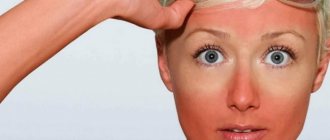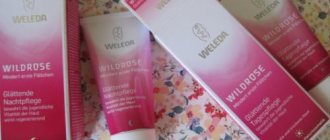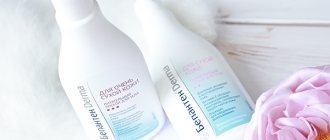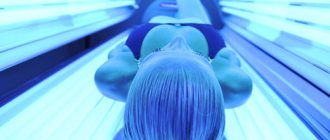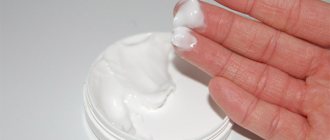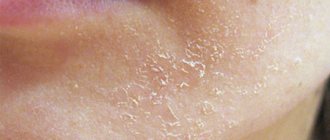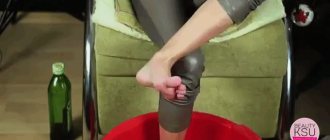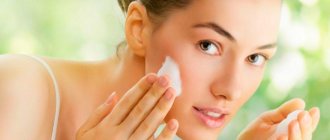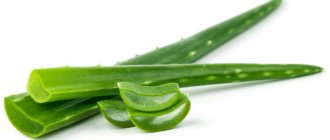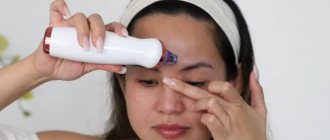How to exfoliate before and after tanning at home?
The content of the article:
- Benefits of peeling
- When can you peel?
- Peeling and tanning in the solarium
- Contraindications
- How to do it right
Exfoliating before or after tanning is a great way to protect your skin, get better results, and maintain them longer. This procedure can easily be carried out at home using various natural herbal remedies. It is simple, does not require a lot of time and significant financial costs, especially since there are many different recipes for this. You will be able to notice the benefits of the procedures very soon, literally 7-10 days after the start of the course. Naturally, the need for this arises in two cases - before a trip to the sea or before visiting a solarium.
Benefits of peeling for tanning
To tan more evenly, the skin must be clean. To do this, it is necessary to regularly remove dead particles and dirt from it. For this purpose, home or salon peeling products are used to exfoliate dead cells.
Benefits come from both superficial peeling, as well as medium and deep peeling. But it will be noticeable only if the tissues are thoroughly pre-moistened with cream, otherwise irritation, itching, and redness may occur. The fatter it is, the better and safer the procedure will be.
Exfoliating after sunbathing is no longer necessary, but it is advisable. This is due to its positive effect on the skin - eliminating the negative effects of exposure to sunlight. These include age spots, peeling, redness, irritation, and dryness. But first of all, tissue cleansing helps prevent photoaging, which is caused by prolonged exposure to UV rays. If this is not done, wrinkles may appear on the face much faster.
Peeling is also useful because it protects against the development of skin cancer. It restores its firmness and elasticity, prevents rosacea from progressing, evens out the surface texture and lightens areas with uneven color, where the tan is not the best. With its help, the regeneration process is also accelerated by improving blood circulation. In addition, the renewal of dead cells is activated, which also has a beneficial effect on tissue restoration.
Dry skin after sunbathing
Gym, locker room, after training I take off my uniform and... Oh horror!!! I'm falling like dust from an old stump.
A week has passed since I returned from vacation. A beautiful tan, a rested face and plus 2 kg in 5 days. Beauty!
Well, oh well... a week later, in the gym, I suddenly (yes, yes, suddenly) begin to crumble. I can't find any other words. There were no signs of burns or dryness. Just bam - and everything is covered in small scales. If this has happened to you, read on. If not, read too...
At first I treated myself.
- The scrub and glove were the first thing that came to mind and were recommended by friends. After the sauna, I scrubbed myself with a scrub. At intervals of three days I repeated the procedure. After the second rub, my skin hurt. After the third, I realized that there was no point.
- Moisturizing and nutrition. I have two body creams. Biotherm milk and Lancome body cream. I applied the cream with massaging movements 3 times a day: in the morning, in the afternoon after training and in the evening. To no avail. The skin under the cream just rolled.
- Olive oil + film. The best olive oil and three layers of cling film didn't keep me from drying out. I am the SAHARA desert.
- Drink...drink a lot. Water and tea, tea and water. Damn... in the morning my eyes are so bad that ice doesn’t help anymore.
I went for a consultation with a cosmetologist:
1. You need to prepare your skin for vacation before your vacation. First, enhance nutrition and hydration with creams. Secondly, we advise you to do a light peeling (preferably in a salon) 2-3 days before your trip. By clearing the skin of dead cells, the tan will go on evenly and will not cause drying out. If you are vacationing in a hotel with a spa, do a peeling procedure on the first day of your vacation. Many people are afraid to steal one day of tanning from themselves, but believe me, this lost day will be returned to you with interest. The day after peeling, use a cream with strong protection against harmful sun rays and do not overdo it with tanning hours.
2. Sunscreens - should not only protect from harmful rays, but also nourish and moisturize the skin. Look for creams with vitamins.
Sunscreens often use para-aminobenzoic acid (PABA), which often causes allergic reactions and dries out the skin. Read the label carefully and if you have sensitive skin, choose a cream that does not contain PABA.
Choose a cream that matches your skin type (light - dark, etc.).
And stop smearing yourself with olive or baby oil. Yes, you will be guaranteed dark skin color. But you're more likely to burn than tan.
3. Swimming pool water is extremely dangerous for dry and sensitive skin. Chlorinated and ozonated water can harm even healthy skin. Take a shower after every bath.
The water in the pool is infested with skin fungi. And if in a public pool they ask you for a health certificate, then everyone swims in hotels. Skin fungus is sometimes carried in a latent form. And we often attribute excessive peeling of the skin to ordinary dryness. In fact, it could be a disease.
4. What I will say next may seem a little strange...but. For hygiene, it is enough to wash your face, hands, feet and folds (armpits, groin) once a day :). Nah. But we are used to showering (entirely) twice a day. Doctors recommend not using soap every time. For intimate hygiene, you should use special products. But for everything else, it’s enough to wash once a day (in the evening). In the morning, we simply wash everything off with water. The fact is that almost all cleansers remove natural moisturizers from the surface of the skin. So that…
5. Wash with warm water. Hot water washes away the protective natural moisturizers from the skin.
6. Avoid harsh scrubs during and after a sunny holiday. Scrubs not only cleanse the skin, but also irritate and dry it out. My mistake was intensive scrubbing after the vacation. Which further damaged not only the top layer of singed skin, but also the new – young skin.
7. Moisturizing with creams throughout the holiday is mandatory. Each tool solves its functions. Sunscreen will never be a 100% moisturizer. Give preference not to marketing cosmetics, but to medical ones. For example, cream with pantel or urea - they do an excellent job with dry skin.
8. Monitor the balance of water in the body. 2 liters of water per day is your approximate norm. Even if you drink 2 liters of Mahito in a day by the pool, you will still have to drink another two liters of water.
9. AIRPLANE - drink water already at the airport. Flying on an airplane is a tremendous stress for the skin and the entire body as a whole. The air in the aircraft cabin is dry and compressed. Take a couple of drops of your day cream with you (or better yet, night cream - it is more nutritious). Feel free to wipe your face with a makeup remover wipe and apply cream. For those who are especially brave, take express masks with you. Remember: if you don’t take care of your skin during the flight, your face and body will be almost irrevocably dry and damaged.
By the way. Many people use thermal water on airplanes. Not worth it. Firstly, you need to know how to use it (after sprinkling your face, wipe it with a napkin after 10-20 seconds). Secondly, thermal water will increase the evaporation of its own moisture and, as a result, the skin will begin to peel off even more and wrinkles will appear.
And finally, I want to give one more piece of advice not related to the skin - but related to the holidays.
There are a lot of bacteria and harmful microorganisms in our world. And they often “come” to us with tap water. Two of them are particularly aggressive today - legionella and enteroviral bacteria.
I’m not a doctor, so I simply don’t have the right to speak on this topic. But I simply must pass on my doctor’s recommendations to you.
- Do not use tap water for drinking.
- Observe the temperature regime of water in hot water networks.
- Clean your shower head regularly by rinsing and disinfecting it before showering, first with cold water, then with hot water. Try to avoid splashes.
- At home or in a hotel, always drain the water for a few minutes before bathing.
- If you are away from home for several days or weeks, drain the water longer. Yes - it's not economical. But health is more important.
When can you exfoliate before and after tanning?
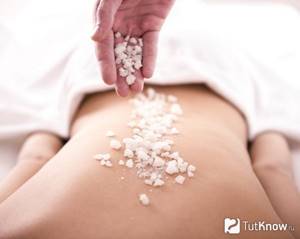
In order to get good results, after cleansing the skin, about 10 days should pass before sunbathing. This period is conditional, the main thing is that she calms down and recovers from the stress she has experienced, which in the absence of such a break can only intensify.
If superficial body peeling is carried out before tanning using coffee, oatmeal and other natural remedies, then sunbathing can be done 4-5 days after that. But for salon procedures, for example, ultrasound, medium and deep procedures, there are restrictions of 2-3 weeks.
The deeper the product penetrates into the tissue, the longer the interval between sunbathing and skin cleansing should be. If the procedure has side effects, then you can start tanning only when the damaged tissues have completely healed. The fact is that UV rays can slow down recovery after damage to the integrity of the integument.
After being exposed to UV rays, which penetrate deep into the tissues, they become thinner, sometimes even suffering from necrosis and severe burns. In this case, naturally, no scrubbing agents should be used until the skin is completely regenerated. This can cause burning, redness and irritation, and cause discomfort.
Possible skin problems after tanning and their elimination
Let's consider what reactions of the epidermis to UV rays happen and how to quickly put the affected skin in order.
Redness, burn
Sunburn is the most common problem among sunbathers.
Signs of a burn:
- Severe redness after sunbathing.
- Soreness, pinching, severe burning.
- Swelling, sometimes edema.
- Bubbles, blisters (begin to form after 2-3 days, with a severe burn after a few hours).
In addition to these signs, a “burnt out” person may experience malaise, fever, and severe thirst. Nausea, vomiting, and chills may also occur.
Is it possible to combine peeling and tanning in a solarium?
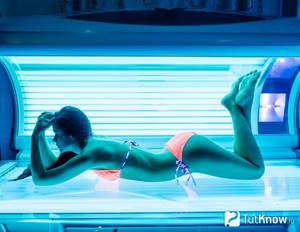
Unlike the sun, a solarium greatly expands pores and further increases skin sensitivity. After his visit, she becomes very susceptible to the effects of various cosmetics, especially those intended for peeling. Even delicate scrubs designed specifically for those with delicate and problematic skin will not save you here. Therefore, there is only one conclusion: you need to wait at least a month before getting a beautiful tan. This way it will be safer, more beautiful, and will lie more evenly.
You need to wait the above time both after performing chemical and laser peeling. If this is not done, you can get burns, recovery from which will take a lot of time. An exception here can only be made for a procedure during which only the superficial layer of tissue is affected. In this case, you can limit yourself to a break of 10 days.
Contraindications for peeling before and after tanning
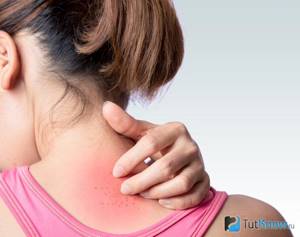
You should not perform this procedure on dry skin, otherwise it may turn red and start to burn. If the composition contains fruit acids, then the use of such products in the presence of acne and open wounds should be avoided.
Body peeling at home before or after tanning should also be postponed in case of fever, viral infections, breastfeeding and pregnancy in the third trimester.
Contraindications to the use of cleansing peeling scrubs are:
- Dermatitis
. This is a skin disease in which a large amount of red rash appears on the body and face. It is usually indicated by severe itching and a great desire to scratch the painful areas.
Psoriasis
. It is better known as lichen planus, which is a non-infectious dermatological disease that has only a chronic form.
Oncological diseases
. An absolute contraindication is skin cancer, and relative contraindications are its other forms. In the latter case, medium and deep peeling should be excluded, while superficial peeling is allowed.
- Allergy to components in the product
. It usually manifests itself in the form of redness of the skin, itching and peeling. In order to exclude this, even before using the composition it is necessary to apply it to the elbow. If there are no consequences, then the procedure can be performed without fear.
Precautionary measures
You should start the procedures with healthy skin. Peels should not be done if:
- Fever, chills, worsening viral or bacterial infection.
- The girl is in an interesting position and is breastfeeding.
- There is an active inflammatory process on the skin, that is, acne and blackheads.
- There is an exacerbation of dermatitis.
- With relapse of psoriasis.
- You are allergic to peeling components.
- A person undergoes rehabilitation after treatment for cancer.
We recommend reading the article about whether you can wash yourself after a solarium. From it you will learn whether it is possible to wash immediately after tanning, after how long and how correctly.
And here is more information about how to wash after sunbathing.
Peels should be performed on healthy and restored skin. It is also important to remember about contraindications. Properly selected peeling will benefit the skin. It will refresh and prolong your tan.
How to properly do body peeling at home?
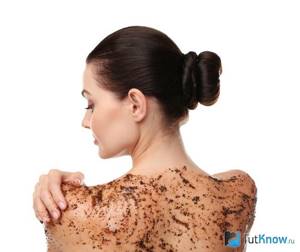
If you don’t want to go to beauty salons and buy special cosmetic products, then you can prepare effective folk remedies yourself based on natural exfoliating ingredients. Anything that can remove dead skin particles is suitable here - sea salt, oatmeal, coffee, mustard and kelp powder, sugar and much more. etc.
To properly prepare the skin for tanning or to consolidate its results, it is enough to complete a course of 10 procedures. The optimal frequency of performing them is 2-3 times a week, at first it is better to limit yourself to 1 time, because the tissues still need time to get used to peeling, which everyone tolerates differently.
BODY TANING AND PEELING. TOP 3 recipes before tanning
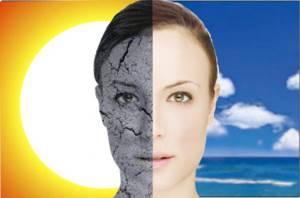
After exfoliation, the skin becomes cleaner, fresher, begins to glow with beauty and youth. And, of course, you always want to become even more perfect by exposing your body and face to the sun’s rays, which will give your skin a beautiful caramel shade. But is it possible to sunbathe after peeling?
Most people associate tanning only with a bronzed body. But in fact, tanned skin is our body’s protective reaction to the aggressive effects of ultraviolet rays emitted by the sun. And the main defensive barrier is the cells of the epidermis.
PROS AND MINUSES OF TAN AFTER PEELING
Due to the fact that exfoliation primarily affects the epidermis, its effect on tanning is twofold:
- Removes the upper layers of the skin, which contain the main deposits of melanin;
- Inhibits the formation of melanin.
On the one hand, the tan lasts longer after the horn cells are exfoliated and goes on more evenly. This happens because there are no sharp changes in pigment on the surface of the body and face.
On the other hand, the procedure leads to the disappearance of an existing tan. And a new one will appear much more slowly due to a decrease in the activity of the cells responsible for the production of pigment.
But there are other, much more serious disadvantages of sunbathing immediately after exfoliation. And they arise due to damage to the epidermis.
Contraindications for peeling before and after tanning
Intervention into the skin of any depth is always stressful for the skin. That is why cosmetologists recommend avoiding additional irritants both before and after the procedure.
Since exposure to ultraviolet radiation is a serious irritant, preparation for medium, deep and some superficial cleanings includes a ban on tanning for 1-2 weeks.
It is widely known that sunlight stimulates the formation of useful biologically active substances in our body, without which full physical development and the formation of the nervous system are impossible. But along with its beneficial effects, ultraviolet radiation can cause irreparable harm to the body: in high concentrations, UV rays destroy cells and cause their mutation.
To protect ourselves from harmful radiation, our skin has developed the following protective mechanism:
- Increased melanin production;
- Thickening of the stratum corneum.
The main protective mechanisms of the skin are concentrated in the epidermis. But exfoliating the body before tanning destroys the protective barrier. It removes the top layers of skin, and the formation of a new stratum corneum takes time.
In addition, some types of exfoliation block pigment production (for example, those aimed at combating age spots), thereby preventing our skin from putting up a melanin blockade against the harmful effects of ultraviolet rays.
RECOMMENDATIONS FOR TANING AFTER PEELING
To avoid negative consequences, all doctors insist on exfoliation in the autumn-winter periods, when sun activity is least. And after each procedure, a cream with SPF must be applied to the skin.
If you still had to perform a mid- or deep facial treatment in the sunny season , then you should choose formulations and technologies that are least traumatic to the epidermis.
Whatever is chosen, the affected area must still be covered with clothing or hats for at least 2 weeks, and sunscreens with an SPF value of 30 or higher must be used.
By the way, in equatorial latitudes, UV rays can penetrate even through clouds, which leads to the effect of “tanning without the sun.” Therefore, cloudy weather there is very deceptive, and peelings (even scrubs) are highly discouraged.
At the end of the period of abstinence from sunlight indicated by the cosmetologist, it is advisable to begin sunbathing little by little, increasing the time spent in the sun by an hour every day.
When can you exfoliate before or after tanning?
How long to avoid the sun before exfoliating will determine the type of peel that will be used. Typically, the most aggressive formulations and the most severe interventions require abstinence. More specific instructions for preparing for procedures will be provided by a cosmetologist during a preliminary consultation.
When can you sunbathe after peeling? It also depends on the depth of penetration of the active ingredient and the time it takes for the skin to recover:
Categorical “no” and other possibilities
Basically, such taboos concern those variants of procedures when the focus is on deep effects. These include phenolic acid. Based on its source, the peeling was called phenol.

Carrying out such a cosmetic event is recommended for the following categories of people:
- people over 40 years of age;
- having an already “floated” oval face;
- persons with deep wrinkles;
- having excessive pigmentation;
- owners of scars from acne and chickenpox.
The impact will definitely be chemical - this means that such treatment should be carried out by a specialist. And this will be precisely the treatment - the course should take place in stages of at least two weeks. In the moments when it passes, everything happens under local anesthesia.
How long should it take before sunbathing? Naturally, you must avoid exposure to the sun for a month and use only protective cream. And it will be possible to sunbathe only after a few months - so this peeling is recommended to be done in the cold season.
Phenol will have a very pronounced effect on the surface layer of the skin. It is for this reason that after a certain period the skin can remain very pale. By the way, such a reaction will occur after the redness has passed.
From the outside it may seem that the skin even looks somewhat unnatural. However, such “metamorphoses” claim the opposite: the whole procedure, on the contrary, was carried out correctly. If a deep type of peeling was chosen, the border between the treated and untouched areas may look unnatural (which is why it is recommended for fair-skinned patients).
This post-peeling manifestation shows why you should not sunbathe - otherwise the skin will simply get a real facial burn.
Recently, facial skin treatment with triacetic acid has become increasingly popular. The composition of this peeling (trichloroacetic, citric, ascorbic and phytic acids along with lactokin) can not only smooth out unevenness and wrinkles, but also stop the phytoaging process.
Again, this option cannot be carried out in the summer - there is a high probability that pigmentation will develop after a certain period. If, however, the procedure took place during the warm season, then you should wear a wide-brimmed hat to avoid contact with the sun. And when the days are cloudy outside, you also need to apply sunscreen to your face.
When can you sunbathe? In this case, you will be able to tan faster - within a month. The use of sunscreen is also mandatory.
Trips to the solarium
The superficial peeling procedure helps to refresh your facial skin very well (you can opt for gluconic or almond options). How long will it take to restore? After such a procedure, the skin comes to its senses in about a week - all that remains is to nourish it two or three times a week with masks. By the way, the effect will be noticeable immediately - it should last at least ten days.
We invite you to read the Review of recommendations for furunculosis: what you can and cannot do. Is it possible to go to the bathhouse with boils on the skin?
How long after such a procedure can you go to the solarium? It is clear that you will have to wait ten days with this - let the fresh complexion compensate for the lack of tanning. If you disobey the recommendations of a cosmetologist and choose solariums, then there is a risk of developing difficult-to-remove pigmentation (and this is at a minimum).
You should not go to the solarium for up to a month if the peeling was of a chemical type. By the way, you should immediately take into account the fact that some time after such an event, the pores may expand - this can contribute to an uneven tan.
What you need to know about peeling
Tanning after a facial peel can actually be very dangerous. This procedure is a kind of stress for the skin, and this especially applies to the skin of the face, since this is where it is the thinnest and most delicate. After peeling, relaxed skin exposed to the sun can easily get burned. It is advisable to carry out many facial care procedures, including peelings, during the cold season, then the facial skin will have time to recover from stress. However, there are a number of cases when facial peeling is performed in the summer or on its eve. Naturally, there is a danger of tanning after facial peeling. But many girls still want to get a beautiful tan. That is why there are some conditions under which tanning after facial peeling will pose the least danger.
Another interesting fact is that facial peeling removes some of the melanin. Consequently, it will be much more difficult for such skin to tan and you will have to spend quite a lot of time to get a beautiful tanned shade. This opinion has been around for a long time and everywhere. Many women's publications, magazines and newspapers publish articles about the dangers of tanning after peeling. But we must not forget that the skin of different girls is different. It follows that contraindications do not apply to everyone. Only red-haired girls and blondes with blue eyes and a light pink skin tone should not sunbathe in the sun after peeling.
Masks if the skin is peeling and peeling
In folk cosmetics, tea tree oil, chamomile, calendula and other components are used as moisturizers.
Calming
There are two recipes for green tea masks:
- For facial skin . You need to prepare the grounds from crushed dried tea leaves and water - you will need 1 tablespoon. Add the same amount of thick cream and 1 teaspoon of honey to it. All components are thoroughly mixed, the mask is applied to the face, neck and décolleté for 20 minutes.
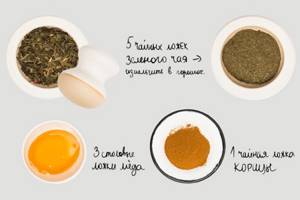
The second option for a soothing and whitening face mask
- For the skin around the eyes . Here she is especially delicate and sensitive. Therefore, the composition of the mask will be slightly different: you need to mix 2 teaspoons of tea grounds with 1 teaspoon of vegetable oil (preference should be given to olive oil). Then the resulting mass is spread on small gauze napkins and “bags/bags” are formed. They are applied to closed eyes for 15 minutes, then the remaining oil is removed from the skin with a regular napkin.
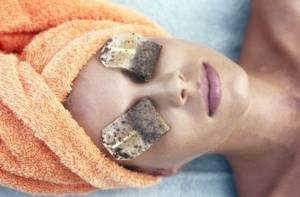
A mixture of chicken egg yolk and aloe juice with a decoction of chamomile flowers, 1 tablespoon each, will soothe the dermis after ultraviolet rays. Apply the mass to the face for 20 minutes, then rinse off.
After applying any soothing composition, the skin should be lubricated with a moisturizer.
Moisturizing
You need to mix homemade cottage cheese (2 teaspoons, ground into a homogeneous mass), tea leaves (ground) in the same amount and 1 teaspoon of fish oil. An excellent addition to this composition would be 2-3 drops of orange or lemon juice, but not for dry skin types. Apply the mask for 20 - 30 minutes, then wash off with warm water.
You can use a vegetable mask to moisturize your skin after sunbathing. It is enough to mix avocado pulp, mineral water and 4 broccoli florets in equal proportions; grind everything in a blender. The finished mass is applied to the skin and left for 15 - 25 minutes.
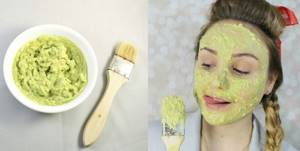
You don’t need to think that any cosmetic oil will have a moisturizing effect, and preparing special masks is not required at all. You won’t be able to achieve the desired effect, but it’s quite possible to clog pores and add inflammation and redness to the skin.
Relieving redness
This skin condition indicates a burn. Therefore, you need to remember what you should never do:
- lubricate the skin with oils;
- use alcohol or any alcohol-containing products for cleansing;
- use scrubs in your care.
Compresses made from calendula flowers will help relieve redness. You need to brew the plant material at the rate of 1 tablespoon per 200 ml of water, boil for 10 minutes in a water bath. After straining, add 1 teaspoon of honey to the mixture and mix thoroughly. The compress is applied for 15 - 20 minutes every 2 hours.
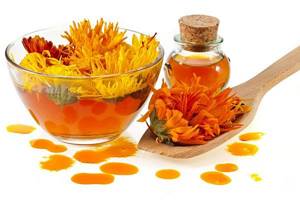
The best remedy is fermented milk products: sour cream, kefir, yogurt. They are applied to the skin of the face in a thin layer and, without allowing it to dry out, new portions of the product are added every 10 - 15 minutes. There can be 3 - 5 such additives. Then everything is washed off with warm water. The procedure with fermented milk products can be carried out any number of times, up to complete restoration.
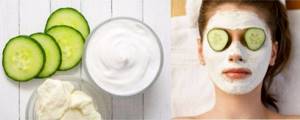
Recommendations for tanning after facial peeling
You don’t need to sunbathe on the beach immediately after facial peeling. After the procedure, 24 to 48 hours should pass. During this period, you need to be in the sun, as then the effectiveness of tanning will begin to decrease.
Experts recommend performing a facial peeling procedure before the resort one or two days before departure.
Many girls, instead of lying on the beach for several hours, use self-tanning. In this case, facial peeling will also help. After all, after peeling, the milk will lie on the skin in a more even layer.
When sunbathing after peeling, do not forget about protective creams. This will eliminate the risk of sunburn. The choice should be made on creams that have undergone dermatological experiments. The ideal sun protection factor is 25-50. You can reduce your protection gradually. But in any case, it should be no lower than SFP25.
Use tanning cream
You can use it instead of moisturizing lotion or alternately. This cream contains unique moisturizing and firming components that nourish, soften and heal the skin. But keep in mind that a good and truly effective product cannot cost a penny. As a rule, these are luxury, expensive products.
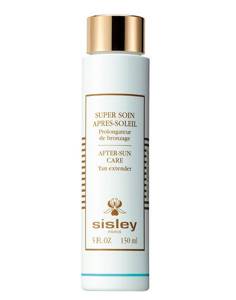
After-sun body moisturizer Sisley Super Soin Après-Soleil
Tanning and exfoliation: what's next?
Sunbathing is a controversial health procedure, and doctors do not have a clear answer to the question about the benefits and harms of it.
On the one hand, the benefits of tanning are obvious. Reasonably dosed ultraviolet radiation increases overall immunity, reduces the manifestations of allergies and is its prevention, stimulates the renewal of blood cells, helps to be calmer in stressful situations and maintain a good mood.
Moderate tanning is a vital and the only inexhaustible source of vitamin D, the lack of which threatens osteoporosis - brittle bones. Staying in the sun helps you lose extra pounds by speeding up your metabolism and enjoy life without experiencing a deficiency of serotonin, the “happiness hormone.”
Tanning after facial peeling
The time that should pass between the course of peeling procedures and free exposure to the sun depends on the type and method of exfoliation.
Mechanical peeling of the facial skin does not impose long-term prohibitions on sunbathing. Scrubbing with compositions containing small particles of arbasics (for example, ground coffee beans, fruit seeds or sea salt), as well as superficial facial cleansing with ultrasound, does not imply a long recovery period.

After such procedures, you can bask on the beach or sunbathe in the solarium in just two days. Gentle and easy removal of dead epidermal cells and impurities does not change the structure of the skin at the epidermal level, therefore it is not a contraindication to ultraviolet rays.
A serious and long-term taboo is placed on tanning after medium and deep peeling procedures. Their result is a restructuring of internal processes in the epidermis. In the case of such exposure, the dead layer of the dermis is completely destroyed, in response to this, the cells begin to more actively produce natural collagen and elastin.
Blood microcirculation improves, the skin receives the oxygen and micronutrients it lacks in normal life. Medium and deep types of peeling have noticeable visual effects, but to achieve them, a woman has to sacrifice her time and correctly plan courses of anti-aging procedures.
- time for tanning after chemical peeling;
The most common and popular chemical peels are acid peels. For example, based on glycolic, trichloroacetic (TCA), lactic, phenolic, azelaic, phytic and retinoic acids. It is better to entrust them to a professional and not save money on visiting a beauty salon. These types of exfoliation solve dermatological problems of facial skin. Therefore, sometimes such peelings are not classified as cosmetic procedures, but as treatments that require topical anesthesia.
Basically, acid peels are prescribed to women after 40-45 years of age, whose face is subject to ptosis of soft tissues - it has become haggard and lost its shape. Also, those who are concerned about age-related and deep expression wrinkles, pronounced pigmentation, and unaesthetic scars, for example, after an injury or acne, resort to the possibilities of chemical exfoliation. After medium and deep peeling, ultraviolet radiation leaves even larger pigment spots and thermal burns on the skin.
An average course of 6-8 chemical peeling sessions and tanning should be separated by at least 2 weeks. At this time, you need to avoid sunlight as much as possible and protect your skin with creams with a high SPF (at least 30 or 50). Therefore, these types of peels are recommended to be performed in the off-season, for example, in early spring or autumn. You can go to the sea or to the mountains after acid peels only after two months.
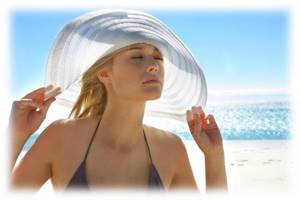
If chemical peeling had to be carried out during the warm season, the woman should have a wide-brimmed hat and sunscreen with an SPF mark of at least 30 as her constant companions for 2 weeks. In the summer, after exfoliation, it is better to go outside on cloudy days. Otherwise, the result of the procedure will quickly disappear.
- time for tanning after laser peeling and microdermabrasion.
Hardware methods for cleansing facial skin also dictate certain rules for tanning. Laser peeling and microcrystalline dermabrasion are only suitable for the spring and autumn seasons. Their action resembles the effect of chemical procedures, and often exceeds them in depth of penetration.
Therefore, after hardware peelings, it is recommended to take a pause of 2 weeks before the first meeting with the sun. And buy a protective cream with a solar filter. After laser resurfacing and microdermabrasion, ultraviolet radiation becomes safe no earlier than a month later.
Scrub
Scrub - this word has firmly entered the life of every woman who cares about her appearance.
Any body scrub is a product consisting of two main components: a soft base and abrasive particles that mechanically exfoliate dead skin cells.
The base for the scrub is an emulsion, gel or cosmetic clay. The choice of scrub based on one or another depends on your skin type. For those with oily and combination skin, it is better to choose clay-based cosmetics. It will help get rid of oily shine and tighten pores. If you have dry and sensitive skin, then a cream scrub . Well, the gel is a universal base for a scrub, which is suitable for everyone.
